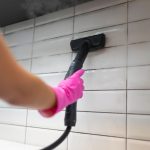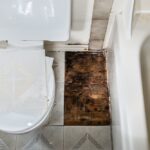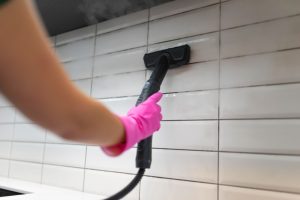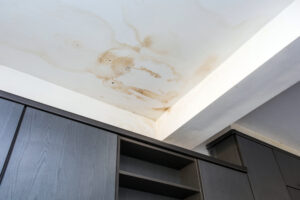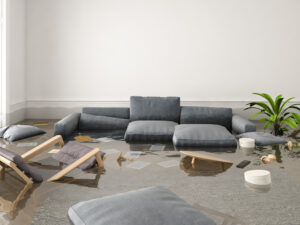Did you know that household leaks can waste nearly 10,000 gallons of water each year? The Environmental Protection Agency (EPA) says this. Also, ten percent of homes waste 90 gallons or more per day. This shows why finding hidden water damage is so important.
Finding hidden water damage is not easy. Leaks often show little signs but cause a lot of damage. Leaking pipes, faulty toilet tanks, and irrigation systems are common culprits. They can lead to a lot of water loss if not caught early.
Homeowners need to watch for high water bills and dampness. These signs can mean there’s a hidden leak. Catching leaks early can save a lot of money and prevent bigger problems.
Key Takeaways
- Leaks can waste 10,000 gallons of water annually per household according to the EPA.
- Common sources of hidden water leaks include leaking pipes, faulty toilet tanks, and irrigation systems.
- Early water damage detection is essential to prevent extensive damage and costly repairs.
- Vigilant maintenance and observation can help detect hidden water leaks.
- Unexplained dampness and rising water bills are possible signs of hidden leaks.
Signs of Hidden Water Damage
Hidden water damage shows itself in many ways. Homeowners can spot these signs early. This can help avoid big repairs and costs later. Here are some key signs of hidden moisture problems.
Mold Growth
Mold in hidden spots like behind walls or under floors means there’s been too much moisture. It’s a big warning sign that needs quick action. Mold harms the structure and can be bad for your health too.
Foul Smells
Musty smells mean there’s water hiding somewhere. These smells come from damp areas where mold and mildew grow. If you keep smelling these odors, it’s time to check for moisture.
Water Stains
Water stains on ceilings or walls show water damage. They look like discolored patches and mean there’s a leak somewhere. Finding these stains helps find where the water is coming from.
Peeling Paint
Peeling paint or wallpaper means there’s moisture under the surface. Water can make paint or wallpaper bubble and peel. This is a sign of bigger water damage problems hidden inside.
How to find hidden water damage in my home?
Finding hidden water damage in your home needs a detailed plan. A thorough water damage inspection can reveal early signs of trouble. This helps prevent water damage and ensures accurate assessments.
Visual Inspection
Start with a close look around. Look for signs like peeling paint, discolorations, or bubbles on walls and ceilings. Also, check for mold or warped floors. Regular checks help catch problems early.
Check Adjacent Areas
Water damage can spread beyond what’s obvious. Check rooms next to the damage, the underside of floors, and attics. This helps find where the leak started. Knowing this helps stop more damage.
Use Moisture Detection Tools
Moisture detection tools, like moisture meters, are key. They measure moisture in walls and floors without damaging them. These tools make finding hidden damp spots easier.
Listen for Sounds
Don’t forget to listen during your inspection. Dripping, hissing, or running water sounds are clues. They often mean leaks behind walls or under floors. These sounds can lead you to hidden problems.
Conclusion
Addressing hidden water damage in your home is very important. It keeps your home safe and in good shape. Look out for signs like mold, bad smells, water spots, and peeling paint.
Do a thorough check of your home. Look at areas around where you find water damage. Use tools to find hidden moisture.
Being proactive is key. Regular checks and listening for strange sounds help catch problems early.
They can fix water damage right and keep your home safe. Taking care of your home protects its value and health.
Always be on the lookout for water damage. Quick action can stop big problems. Fixing water damage and keeping up your home is essential for safety.







